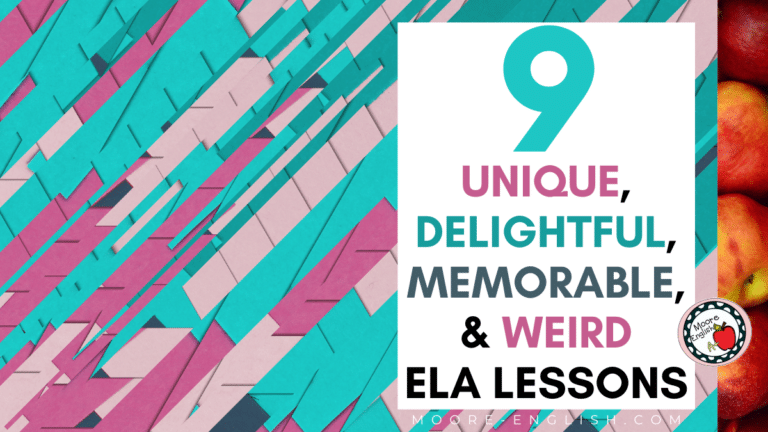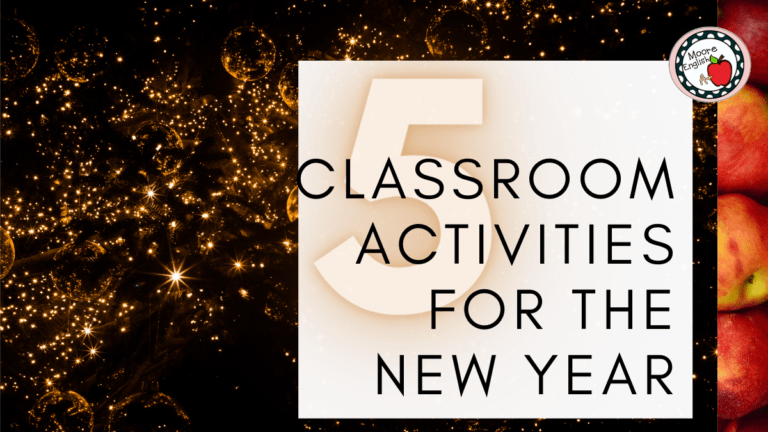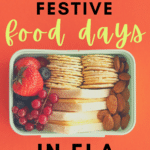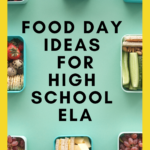Food days are a fun way to engage students! It’s easy for world language teachers to incorporate food days as part of their study of culture. Even math teachers have Pi Day!
Sometimes it can be trickier to incorporate food days in ELA, so here are some fun ideas!
This post this post may contain affiliate links. Please read the Terms of Use.
Pair Food Days with Literature
My favorite way to include food days is when they fit into a unit naturally. A random celebration can be fun, but food days can be more meaningful when they support curriculum.
Anytime literature includes a feast or banquet, teachers can incorporate a food day! Eating together is symbolic, so this can be a great way to emphasize symbolism. The community you build in your classroom will mirror the mood of the book! This fits well with literature like Beowulf.
Similarly, the banquet scene in Macbeth, which juxtaposes the hospitality of a meal with the power of Macbeth’s guilt, is another opportunity for incorporating a food day! Check out even more ideas for getting students engaged in Macbeth!
Additionally, Pride and Prejudice lends itself to incorporating tea parties! These tea parties can be fun ways to connect with the culture of Victorian life. Plus, these tea parties can be the setting for classroom discussions! Check out my favorite ideas for an inspired Pride and Prejudice unit.
Publication and Food Days
Food days also go well with celebrating and publishing student work! When my students engage in creative writing, we usually end the writing process with some kind of presentation or celebration!
For example, when students write their Shakespearean sonnets, we end our study with a poetry slam! Incorporating treats in the event adds to the celebratory nature and takes the pressure off student performers! Grab my free, editable sonnet rubric today!
Similarly, last time students shared their Book Cover Design Projects, we hosted a Book Fair or Science-Fair style event. Each student or student group hosted a “booth” where visitors could come see the book cover designs. Adding treats to this made the event even more special. Regardless of what kind of presentations your students make, they are a great opportunity for food days!
More Opportunities
Another fun way to incorporate food days is to make them part of your calendar! Depending on where you are in your curriculum, you could match celebrations to key days in literary history (the Ides of March, anyone?) or to the birthdays of towering literary figures!
Additionally, food days can be good rewards or incentives. After our state testing, we usually host a popcorn and movie day where students can decompress and celebrate their success and hard work.
Similarly, some classes have found food days to be behavior incentives. Last year, one of my classes struggled to be in their seats when the bell rang, so they started a competition. The best part was that this activity was student driven! They came up with the idea, set the goal, and tracked their progress. In the end, their behavior changed, and they even inspired another section to start a similar contest!
A Few Words of Caution
While food days are a lot of fun, there are some concerns to keep in mind before you eat!
- Recently, COVID has changed the way we do food days. No more can students bring in homemade treats or eat in close quarters, so eating may have to happen in larger common spaces.
- Similarly, I always do a Google Form for allergies or sensitivities beforehand.
- Lastly, food days cost money, and that can be difficult for students and teachers. Before spending money yourself, see if your admin has funds set aside and/or if your community can make any donations. If that doesn’t work, it’s important to remember that bringing in treats or any other supplies can’t be attached to anyone’s grade and/or can’t be required.
What other opportunities do you have incorporating food days in ELA?
















